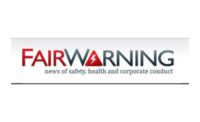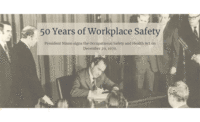Source: Center for Progressive Reform
Every year, thousands of workers across the United States are killed on the job — 4,679 in 2014 alone. Thousands more are seriously injured. Many of these deaths and injuries are entirely preventable when employers put in place basic safety measures. Some even result from company policies and practices that encourage and reward behavior that creates unacceptably risky conditions.
A case for prosecution
Ignoring workplace safety requirements is against the law, but a new manual from the Center for Progressive Reform notes that employers rarely face criminal penalties for endangering workers’ health and safety. Instead, the Occupational Safety and Health Administration (OSHA) and state labor agencies typically impose only small civil fines for regulatory violations. CPR’s manual, Preventing Death and Injury on the Job: The Criminal Justice Alternative in State Law, urges action at the state and local level to prosecute worker death and injury cases under a state’s general criminal laws, such as for manslaughter, assault and battery, and reckless endangerment. The manual also provides a roadmap for workers’ rights organizations to reach out to local prosecutors, law enforcement, and regulators about investigating workplace incidents as potential crimes, and prosecuting employers and responsible executives when warranted.
“Worker deaths are too often dismissed by local authorities as unfortunate accidents,” says manual co-author Rena Steinzor, a Member Scholar of the Center for Progressive Reform and Professor at the University of Maryland Francis King Carey School of Law. “But when workers die or are seriously injured because their employers didn’t follow the law, police and prosecutors need to investigate and go where the evidence takes them. Unfortunately, too many companies reward cost-cutting regardless of the risks to workers, and they see fines from OSHA and state labor agencies as nothing more than a cost of doing business.”
A "powerful supplement"
“State criminal prosecutions against scofflaw businesses and executives can be a powerful supplement to the weak criminal penalties of the OSH Act and state labor laws,” adds co-author Ron Wright, also a CPR Member Scholar and Professor of Criminal Law Wake Forest University. “Aggressively pursuing criminal charges also deters employer neglect by sending the message that ignoring workplace health and safety won’t be tolerated. Not only does prosecution lay blame where it belongs, it provides a powerful disincentive to reckless behavior.”
Given the shortcomings of OSHA’s penalties, and efforts by Republicans in Congress to block updates to them, workers and advocacy groups have sought another avenue for ensuring workers’ safety, urging state and local prosecutors to pursue criminal charges in cases where businesses and their executives cause or fail to prevent worker deaths and injuries.
CPR’s new manual examines what makes these advocacy campaigns successful and offers guidance to advocates interested in pursuing criminal charges in response to individual workplace incidents. The manual encourages advocates to continue building on their successes in individual cases by working to establish a comprehensive occupational health and safety crime-reduction program.
Webinar TODAY
Today (Thursday, March 24), at 1:00 PM (EST), CPR will host a webinar, open to the public, to share the manual and talk with allies at the Philadelphia Area Project on Occupational Safety and Health (PhilaPOSH) and the New York Committee for Occupational Safety & Health (NYCOSH) about their experiences working in their communities to enhance criminal prosecutions in worker injury and fatality cases. The webinar is open to the media. To register, visit: https://cc.readytalk.com/cc/s/registrations/new?cid=wsz5raf1dq6f.
The manual’s co-authors include CPR Member Scholars Martha T. McCluskey, Thomas O. McGarity, Sidney Shapiro, Rena Steinzor, Ron Wright, and CPR Policy Analyst Katherine Weatherford. The manual is made possible by a generous grant from the Public Welfare Foundation.
Read the manual: www.progressivereform.org/articles/WorkerProsecutionManual_1602.pdf
Visit CPR’s Resource Clearinghouse to access sample materials and additional resources at: http://progressivereform.org/WorkerSafetyStates.cfm.



